Expert Q&A: Dr. Ronald Trosper
By Amy Nelson
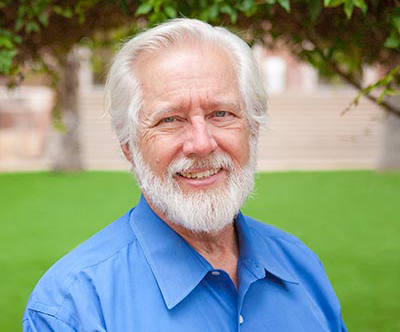 Generally speaking, how have indigenous societies defined “economy?”
Generally speaking, how have indigenous societies defined “economy?”
That is a huge question. For most indigenous societies, the economy isn’t a separate, material thing as it is in general economic theories. It is an aspect of a social system, and it is embedded in their social relations. They see each other and the land as existing in social relations. Many indigenous peoples see the health of the land and the well-being of the people as highly connected.
What are some of the economic realities faced by indigenous communities in North America today?
The economic realities are subject to the political realities. Tribes have much more difficulty than other people protecting their land and self-governance in the United States. When tribes go to court, often, if it would benefit them to be treated as a private property owner, the courts treat them as a sovereign and their property rights are not protected. If it would benefit them to be treated as a sovereign, then the courts treat them as a private property owner and they again lose. There is a strong record in the courts that if land held by a tribe is confiscated or has its value reduced, the Fifth Amendment does not apply. Tribes have a great deal of trouble defending their property against taking by the federal government. The further depth of this problem is that the Supreme Court does not protect Tribal property or governance rights. Through what is called the “Plenary Power of Congress,” Congress can make laws about tribes and the Supreme Court will be deferential to Congress. In contrast, the Supreme Court of Canada has overruled legislative decisions that restrict the rights of indigenous communities, although “aboriginal title” is not as protected as are other property rights.
How can a government run an economy if its assets are subject to confiscation or it cannot regulate economic activity within its jurisdiction? Tribes are trying to fix matters with their own legal codes, however.
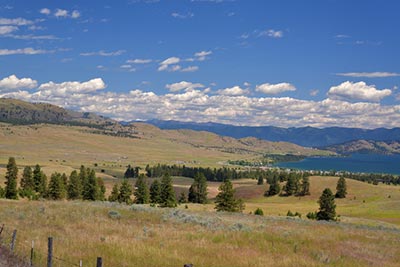
Let me give an ecological example. On the Flathead Reservation, we have been very active in restoring the land and improving the way the land is treated. But we are a checkerboarded reservation: there is Indian and non-Indian land. The Supreme Court does not allow a tribe to have significant zoning influence over non-Indian land, so we had to work out a cooperative arrangement with the local County. But recently, the County had a change in leadership and now they are backing out of our joint zoning program. Controlling aspects of people’s relationship with land is very difficult with a bifurcated political system. There are various legal rules that limit the ability of tribes to put controls over non-Indians within their reservation. This would not be tolerated outside of a reservation, where cities or states have complete zoning authority. Land owned by non-citizens is still under the regulation of the local government. Lacking such authority presents a tremendous problem if a tribe wants to do ecological restoration or improve ecological performance.
In the late 1990s, you published a paper in Conservation Ecology entitled “Incentive Systems That Support Sustainability: A First Nations Example” in which you wrote about the traditional potlatch system of indigenous peoples in the Pacific Northwest. Tell us about the potlatch system and how it contributed to cultural and ecological resilience?
The potlatch system existed up and down the Pacific Northwest Coast of North America, where people who were living off of salmon faced the problem of fisheries management. For an economist, this is what we call a “common pool” problem: if people are allowed to operate as individuals, they will compete with each other and they end up overharvesting. As a result, the resource suffers. But the archeological record along the Pacific Northwest Coast demonstrates that for many more than three thousand years, the indigenous people had a very productive economy and the fisheries did not decline. In fact, anthropologists discovered that the fisheries improved (based on measurement of the average size of the fish, which increased). This is unusual in an open-access, common property situation. This happened because of the potlatch system.
If people are fishing in a fishery independent of each other, they will invest in a boat, buy fishing gear, and get as much fish as they can for themselves. But if there is a rule that says, “when you get off the fishery, you must share your catch with the other fisherman,” things change. If people catch lots of fish, they are not going to be able to keep it all, but if the other fisherman catches lots of fish, those with small catches are going to get some fish. That greatly reduces the incentive to overfish, and to overinvest in fishing equipment. With the potlatch system, the people controlling the rivers had a system of sharing the benefit of the harvest among themselves. They would harvest in the summer, process the fish, and then have potlatch feasts at which important chiefs would distribute their property to the other chiefs in the valley. In the Pacific Northwest, families were grouped into large “houses” run by title holders. With the potlatch system, each house had to share its harvest with others. The title holder was recognized by other title holders by his ability to share-by how generous and good his feasts were. People were judged on how well they managed the fishery.
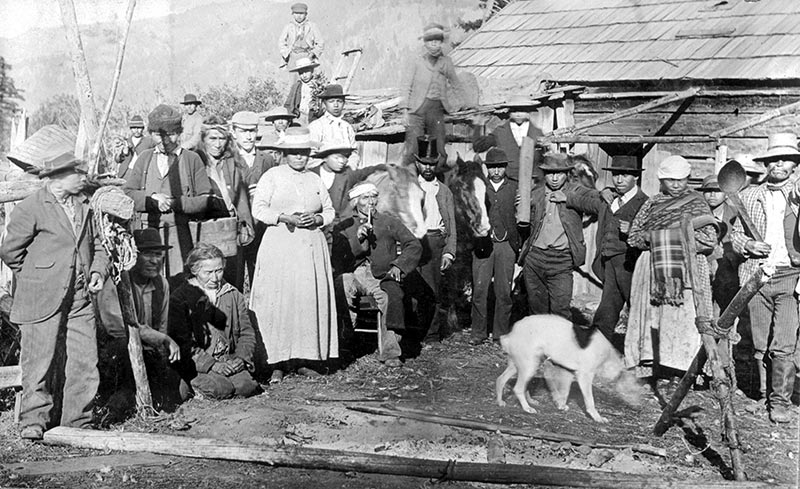
Economists refer to the net value of a common pool resource–what is left after expenses–as “rent.” If people using a fishery don’t know what the rent is, it is very hard to maximize it. All of the exchanges among Houses in the potlatch system were very public. By going to a series of potlatches over the winter, people could observe how well the fishery was producing by how much people had to give to each other. They could actually see what the rent to the fishery was. So not only did the potlatch reduce the incentive to overfish, it also provided information about the state of the fishery.
In many common pool situations these days, do folks know the total value of the annual harvest from the resource? No, they don’t, because it’s all privatized and secret information. But if the information is public and shared, people can have a sensible public discussion about the management of the system. That’s what happened at the potlatch feasts.
Do potlatches still take place today?
Potlatches still occur today, but they serve mostly for community building through sharing and generosity. Potlatches have lost their tight ties to fisheries because communities have mostly lost their fisheries. In Canada, the government has appropriated most of the fishery. The potlatch is no longer as connected to ecosystem management as it should be. In Washington State and along the Columbia River, enforcement of treaty rights have awarded half of the harvestable fish to tribes, and the states and tribes co-manage fisheries using the top-down approach common in the United States. The potlatch system was not an adopted alternative; if it had been, non-Indian as well as Indian fishermen would need to participate. Although such a system is probably politically infeasible now, I believe systems of sharing ecosystem rents would improve ecosystem health.
Did other Tribes and First Nations throughout North America have systems like the potlatch?
Other societies had similar systems of managing the landscape. For example, in northern Canada, indigenous communities that participated in the beaver trade had family hunting territories. Each community had a beaver steward who was responsible for the quality of the beaver in his territory. But the beaver steward had to share that resource with his relatives, and if he was not treating the resource well, he would lose his position.
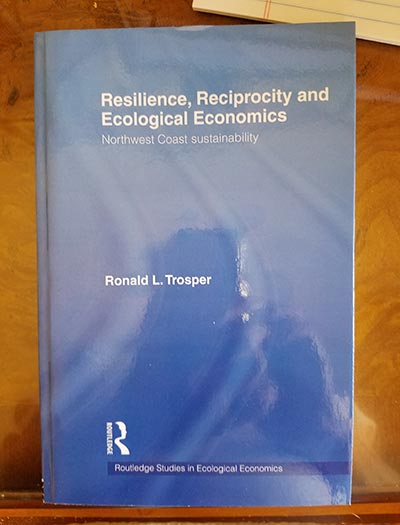 The idea of sharing the land and being generous with each other and with other entities is a widespread ethic among indigenous communities. I grew up in a community that harvests huckleberries, and I was told that one must leave enough huckleberries for the bears, because they deserve their share. The importance of reciprocity and relationships is common among indigenous communities, but the form of systems for managing the landscape varied with the ecological system. I have written a book on this subject: Resilience, Reciprocity and Ecological Economics: Northwest Coast Sustainability (Routledge, 2009). In one chapter of that book, I speculate about how the fisheries might have been managed if the settlers had to abide by the rules the Indigenous peoples had in place.
The idea of sharing the land and being generous with each other and with other entities is a widespread ethic among indigenous communities. I grew up in a community that harvests huckleberries, and I was told that one must leave enough huckleberries for the bears, because they deserve their share. The importance of reciprocity and relationships is common among indigenous communities, but the form of systems for managing the landscape varied with the ecological system. I have written a book on this subject: Resilience, Reciprocity and Ecological Economics: Northwest Coast Sustainability (Routledge, 2009). In one chapter of that book, I speculate about how the fisheries might have been managed if the settlers had to abide by the rules the Indigenous peoples had in place.
With the potlatch and similar systems, it seems like most indigenous societies produced, distributed, consumed, and accumulated only what they needed. I understand that extensive trade networks existed, but that most economic production was for subsistence or redistribution. Today’s indigenous communities exist within the context of capitalism. Can you share an example of a situation where an indigenous community has responded to this with innovation?
The way the Menominee Tribe in Wisconsin manages the forest is a good example. Before explaining their approach, I want to object to the wording of the question. “Subsistence” does not describe the wealth which Indigenous societies have generated from their lands; it is a word that has been used to restrict Indigenous harvest levels. I don’t think most people would like to have their income limited to “subsistence” levels, as has been done to First Nations in Canada in their access to fisheries. The extensive trade networks in North America before the settlers arrived supported wealthy communities.
One of the key capitalist ideas about forests is that trees are treated as capital, and the growth rate of the trees is judged by whether there is a return on the capital that is equal to the general interest rate of the economy of the time. The age at which a tree is harvested is determined by comparing the growth rate of the tree to a rate of interest. When managers do that, they end up cutting out all the big, old trees, in order to grow a young forest—a plantation, essentially– of species that grow quickly.
But Menominee do not judge the vitality of their forest by its rate of return compared to the capital market. They value the forest for more than just the trees. They value the wildlife and the plants that grow beneath the trees. They value the big, complex forest. They do not harvest their trees when young. They are very good about inventorying their forest, and since they got control of it, they have increased volume of growing stock. Trees in a dense forest are not going to grow as fast as trees in a not-so-dense forest, but that is how they want it. They are not clear cutting the forest and turning it into a bank. They are growing their trees to a large size before harvesting. They also have a lumber mill that processes big trees, which is a rarity these days. They don’t maximize the sustained yield, but they do have a large enough sustained yield to run a lumber mill and they produce very fine, clear lumber. The lumber mill provides some good work for people, and the loggers are all Menominee.
What are some of the practices they apply in managing the forest?
They determine the age at which they will harvest their trees based on the desire for quality, and they don’t regard small trees as high quality. They mark in such a way that they are improving the trees that they leave behind. They do a selection harvest in the hardwood forest. In the pine forest, they use an even-aged management system. They pay a lot of attention to the linkage between the trees and the other plants on the ground. They regard the plants as a community with elders and youth.
Have they had to contend with invasive species or nuisance pests?
They have had to deal with invasive species. When I was last here, they took us to a spot where they had very aggressively eradicated an invasive plant, and they were in the process of restoring the community of plants that they wanted. Their invasive species management depends on the nature of the invasion. They are having an increase in insect activity, and they have hired a full-time entomologist to help. Change in temperature is having an impact on the forest. They have another concept: Don’t put all your eggs in one basket (the eggs being the different species of trees, and the basket being the forest). They see biodiversity as a risk management policy.
In the U.S., tribal foresters collectively manage nearly 18 million acres of forested land on 305 reservations. I know that there is a Native-led Intertribal Timber Council dedicated to facilitating communication and training of tribal foresters and advancing sound management of Indian forests. Is the Menominee Forest a model for these foresters?

I’d say so. When the Intertribal Timber Council’s very first Forest Management Assessment Team interviewed tribal members across various forested reservations, they found that the public was really interested in protection of the forest—keeping it intact and protecting it against excessive harvest. They also found that there was a lot of concern about the forest not producing things other than income from the trees. Tribes are concerned about forage for deer and elk, as well as protection of calving areas and provision of cover. Berries and medicinal plants are important and their habitats protected. The traditional names of places on the landscape often tell tribes what used to grow there. I have observed that as tribes get control of the forest, they try to do more multi-resource management, and the timber cut that is calculated using the standard capitalist models of trees gets reduced dramatically.
On my reservation (the Confederated Salish and Kootenai Tribes), we harvest about 20-25 million board feet per year, but at one point, the Bureau of Indian Affairs (BIA) had calculated an annual allowable cut of something like 60 to 80 million board feet, which is way too high for that forest if we want to have the other values. Although the Tribal Council needed to approve timber sales, the BIA foresters had leverage. Most of the Tribal government’s income came from the forest. The Tribal Council was dependent on the forest income for its expenditures, so all the BIA had to do if the Tribal Council wanted a different kind of timber harvest was to threaten to delay the flow of income for another six months to redo the forest sale planning. The National Indian Forest Resources Management Act in 1990 did not change such asymmetry of leverage for tribes dependent on their forest income, although it did allow a wider range of management alternatives.
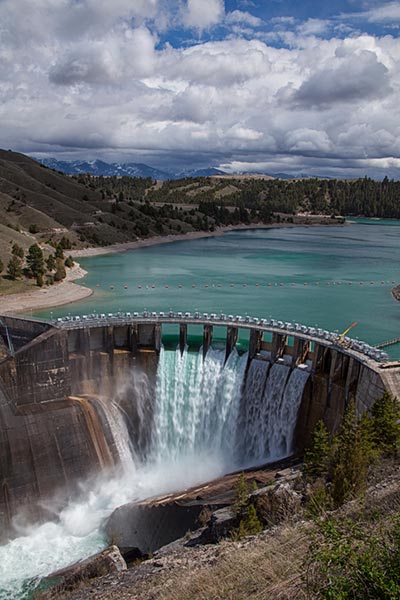
Our Tribal Council had a great deal of trouble controlling forest harvest rates; but that changed when my Tribe got the right to much higher income from a hydroelectric dam. The forest could produce about 4-5 million dollars a year; beginning in 1985, the Tribe obtained an annual rental for Kerr Dam of 9 million dollars a year. With another source of income, the Tribe wasn’t so dependent upon the forest. The next time a big timber sale came in from the BIA, the Tribal Council said something like, “We don’t like what you have planned. We want you to break it into smaller pieces, create interdisciplinary teams of scientists to evaluate the harvest plans, and include culture committees in the evaluation of the harvest plan.”
The BIA timber manager said something like, “Oh…that’s going to take a lot of work to plan the new timber sales. That’s going to delay the harvest.” The Chairman of the Tribal Council smiled broadly and said, “Take all the time you need.”
When it came time to write the next forest management plan, the Tribe wrote it. One of the things we did was reclassify the forest based upon fire regime, rather than on administrative divisions or timber type. We had four fire regimes–frequent return, intermediate return, long return, and super long return fires—and the silvicultural treatments were designed for each fire regime. Explicitly recognizing the role of fire in the way of classifying the forest became the basis of the plan. Different species of trees function differently depending upon the kind of fire regime. In a frequent return fire regime, for example, ponderosa pine does better than Douglas fir. Managers favor species that can stand frequent fire. That also allows management of fire risk, because in a less dense forest, future forest fires are less likely to go into the crown. From the basis of the return fire regime, ecologists and botanists can also figure out which species are best to encourage. This system also allows for more natural regeneration of the forest.
In addition to the forestry management approach of your Tribe and the Menominee, can you share another example where indigenous economic development has been linked with practices that advance environmental stewardship?
The September 2017 issue of the Journal of Forestry has a series of articles that are examples of this. The Klamath in Oregon, for example, have entered into a “Master Stewardship Agreement” with the U.S. Forest Service to participate in the management of their former forested land (now the Fremont-Winema National Forest). The U.S. Forest Service controls the land, but the Klamath have residual rights to hunt, fish, trap, and gather there. Conditions in the forest had deteriorated due to fire suppression and other past management practices. Through the agreement, the Klamath are leading the restoration and management of portions of the forest in ways that allow trees to be harvested while achieving ecological goals of improving forest structure, diversity, and resilience.
The Klamath brought in two well-known foresters who are proponents of active management—Norm Johnson of Oregon State University and Jerry Franklin of the University of Washington—to help them with this plan. The paper in the Journal of Forestry explains what the management plan is, what its goals are, and how it is being implemented. I happen to know both scientists, and I know the larger political context in the western Oregon area. In that region, there is a polarized fight between the total preservationists, who want no harvest, and the total harvesters, who want to harvest all the old growth and establish plantations. Johnson and Franklin are having a lot of trouble convincing people that active management somewhere in the middle makes sense ecologically. But they’re not having trouble with the Klamath. The Klamath’s balanced approach to managing the forests –much like the Menominee’s–is distinctive.
In the book Aboriginal peoples and Forest Lands in Canada, which you co-edited in 2013, you discuss co-management initiatives and joint ventures between government, forestry companies, and native communities. You also co-authored a related paper in 2010. Many of our readers may be interested or already involved in collaborations with indigenous communities to achieve conservation and sustainability goals. Based on your studies and experience, what advice can you offer these readers about the best ways to achieve success?
The best thing to do is share decision-making power. If the indigenous side is allowed to have significant influence, and their approval is required for the plans, they will likely share their knowledge and help in making co-management work. Usually in the Canadian or American system, the Tribes must have some kind of leverage to get resource managers to the table. It is important to examine and be aware of the leverage of the various groups.
A nice example is the Pikangikum Nation in Ontario. They wrote “Keeping the Land,” a plan with the Ontario Ministry of Natural Resources to co-manage the Whitefeather Forest and adjacent areas. By “keeping the land,” they didn’t mean holding it exclusively for themselves; they meant keeping it healthy. Despite the Pikangikum’s lack of leverage (unlike most tribes in British Columbia, who do not have treaties and are now asserting their aboriginal rights, the Pikangikum already had a treaty in place), they were able to collaborate with the Ministry to create a plan that will help sustain the forest and provide new land-based livelihood opportunities to the Tribe.
Paying attention to the power of relationships and respecting the fact that the Tribe usually has concern for the land and has taken care of it for thousands of years helps a great deal in co-management.
You have taught forestry and served in administrative positions at several universities. Are tomorrow’s forestry practitioners being taught indigenous forestry practices?
Yes. In fact, at the University of British Columbia, anyone pursuing a degree in Forest Management is required to take a course on Indigenous Forest Management Principles. At Northern Arizona University, we included indigenous ideas in the curriculum, and in the junior year course, the final case study was about the Menominee reservation. The ideas are penetrating the forestry curricula. It is very significant that the Journal of Forestry has produced special issues on Native American forestry.
What about indigenous participation in the field? Are you seeing more young people from indigenous communities entering the field of forestry?
Definitely. They go to school, get their degrees, and go to work at home.
You are writing a book about indigenous economics. Tell us about that book and why it might be of interest to people involved in ecological restoration, conservation planning, and regenerative design?
It’s a book about indigenous economics, so I begin by defining what I mean by indigenous. I focus on the basis by which tribes maintain and modernize their concept of indigenous identity. Then I talk about a key part of indigenous identity: responsibility to the land. The main analytical part of the book emphasizes the importance of paying attention to and generating good relationships among people, and then extending that idea to the land. Indigenous people recognize the land as an independent and somewhat autonomous source—an actor that must be respected and must participate in the thinking about how management will proceed. In the Western tradition, such “listening to the land” seems odd. But it translates to good monitoring. One looks at how the plants and animals are responding to their treatment. If they’ve departed, have we been disrespectful by treating them incorrectly or not taking care of their habitats?
The next idea I concentrate on in the book is sustainability, the long-term health of the system. In indigenous communities, decisions are made based upon what the current generation needs, but also what future generations are going to need. The Menominee like to say, “We are borrowing the forest from our grandchildren.” I focus on how, in the indigenous economic decision-making process, one takes into account the sustainability requirements of the system.
I also discuss the elephant in the room, and a difficult question: If one wants to take an indigenous viewpoint towards land management, how does one deal with the market system? How does one decide which products of the land to sell? How does one deal with the market system’s incentives to evaluate decisions based on relative prices, rather than on the quality of relationships with the land? I discuss the difficulties that must be dealt with when indigenous people want to make a livelihood with the market economy.
I hope to finish the book, which will be titled Principles of Indigenous Economics, by the end of 2018. It will be published by the University of Arizona Press.
Heartfelt thanks to Ronald Trosper for sharing his time (during the hectic, final days of the semester!) and knowledge.
